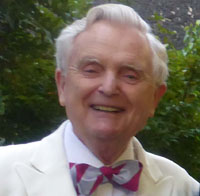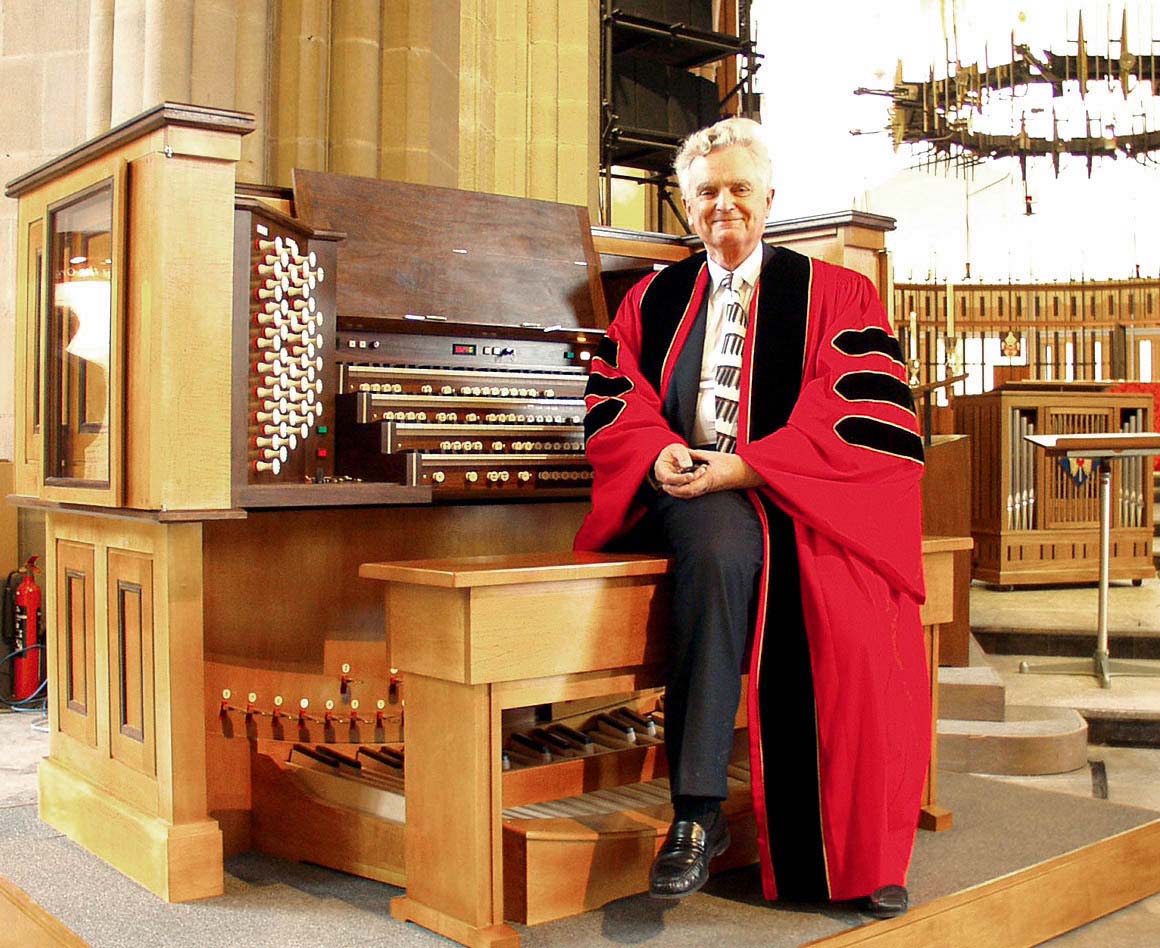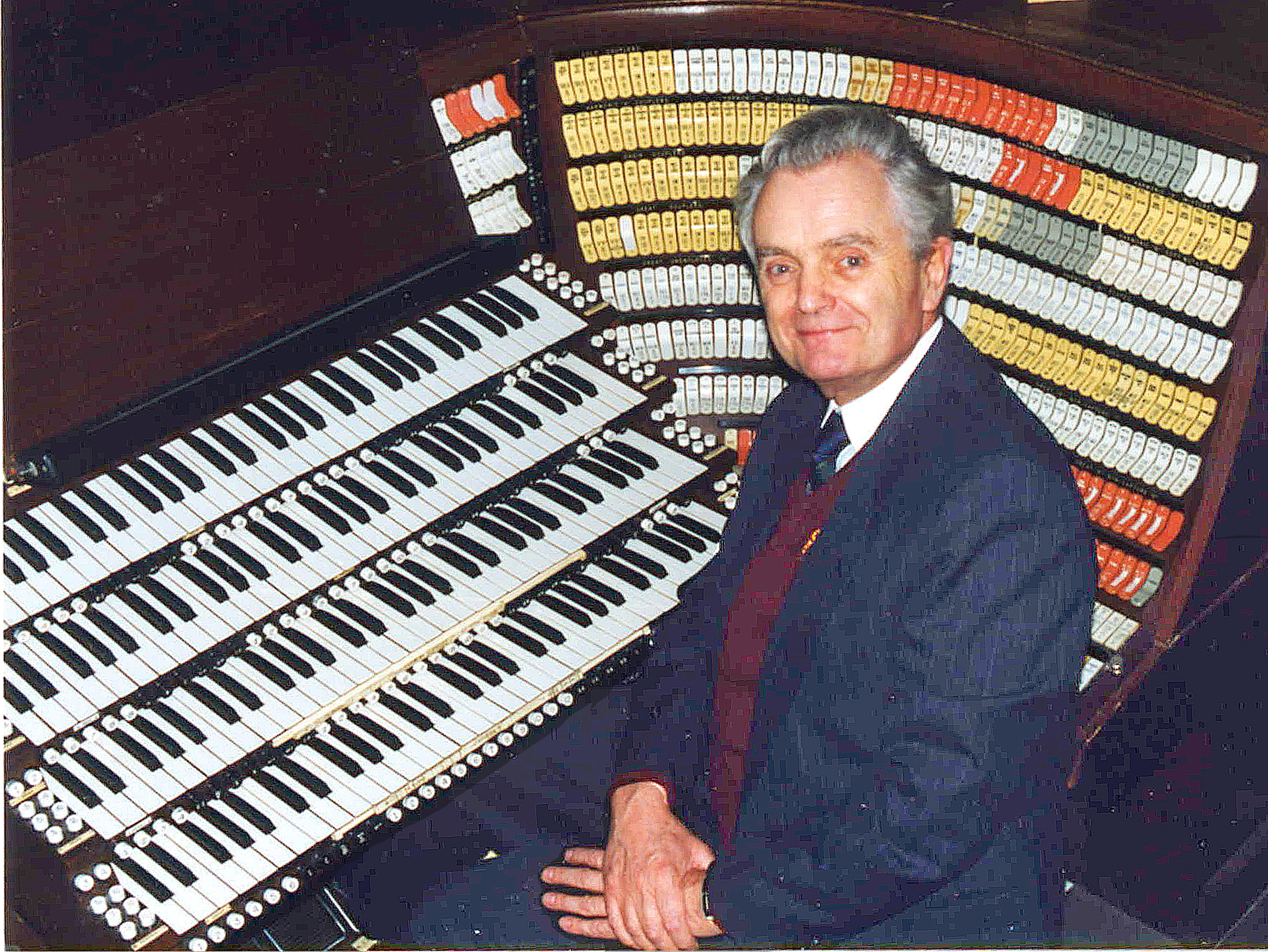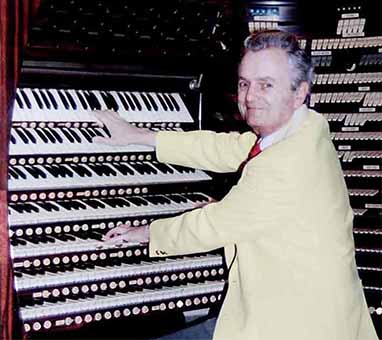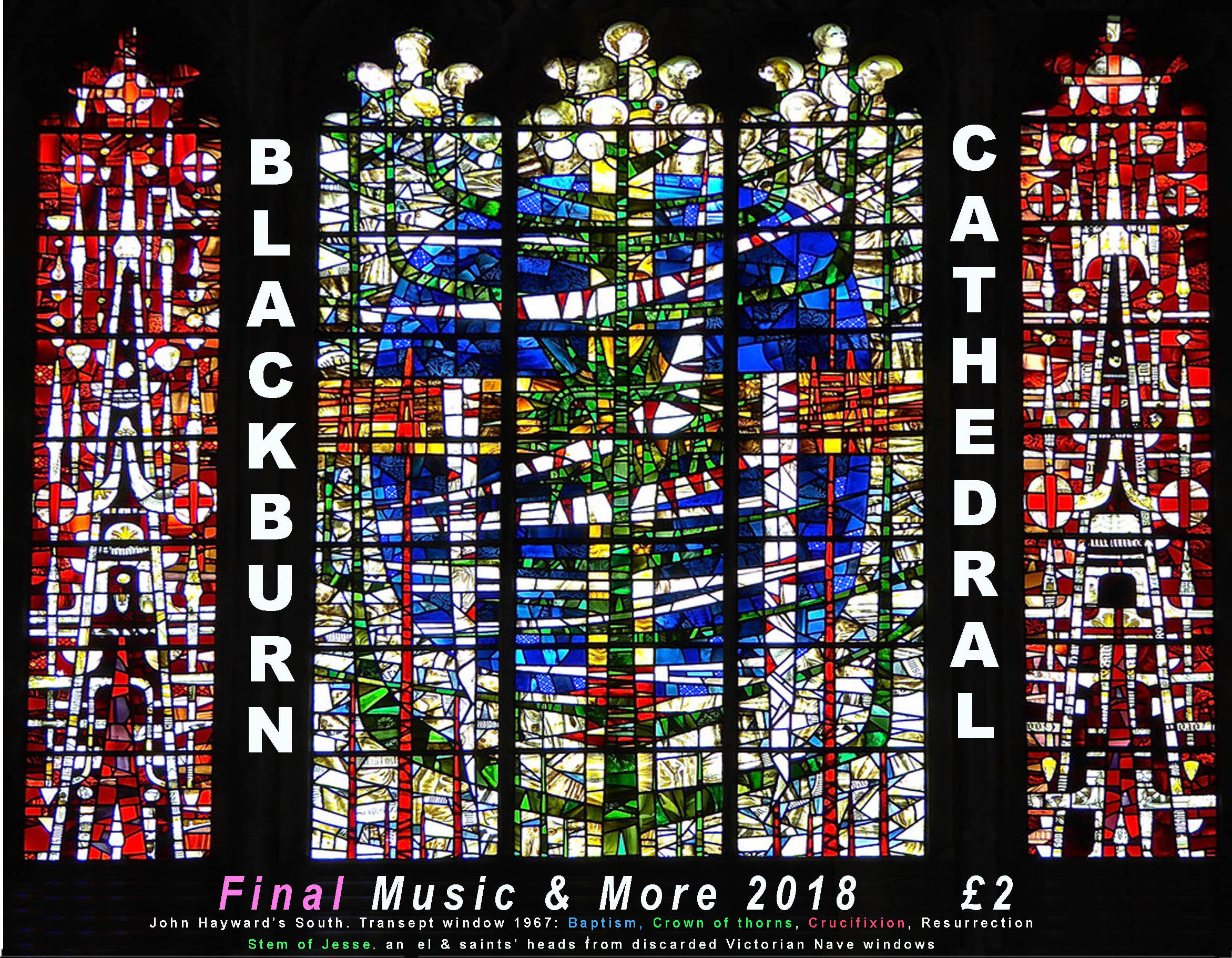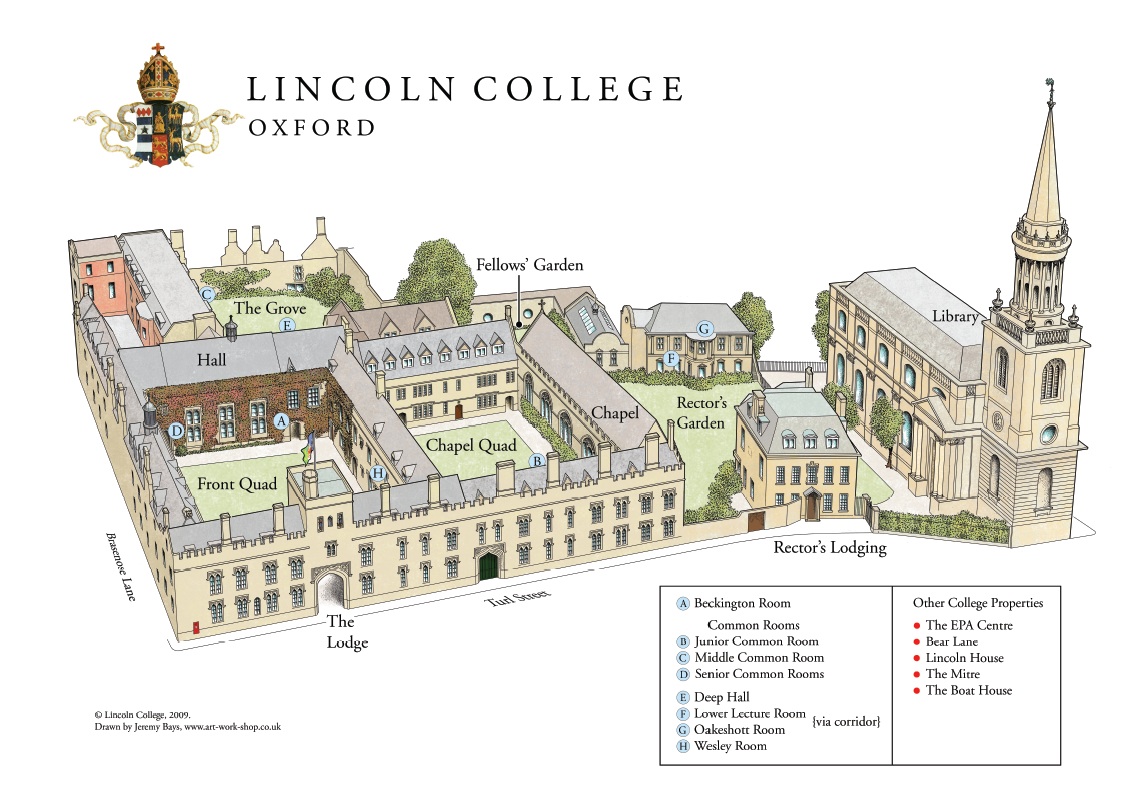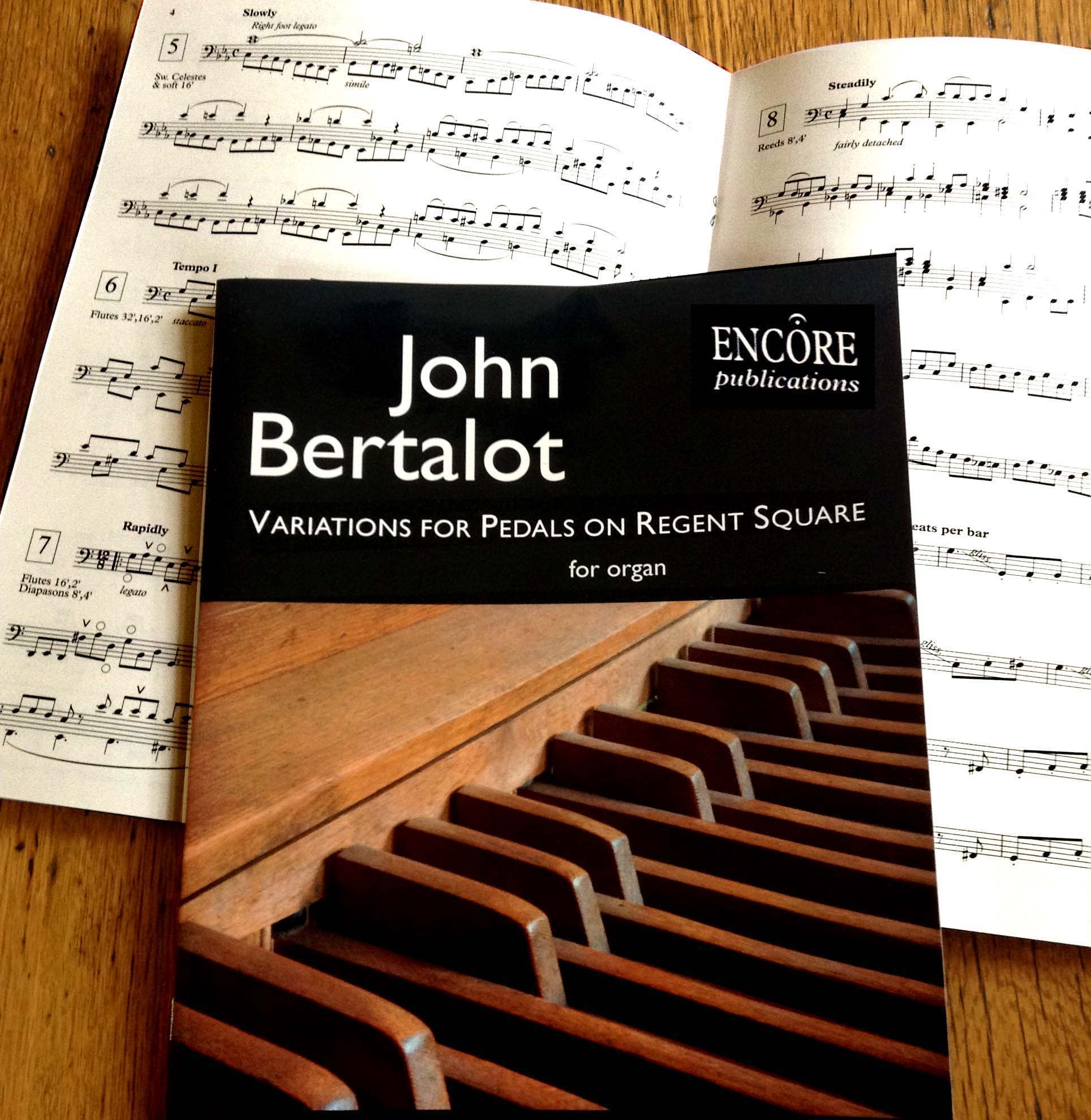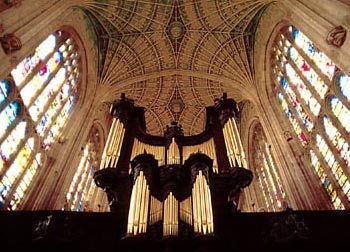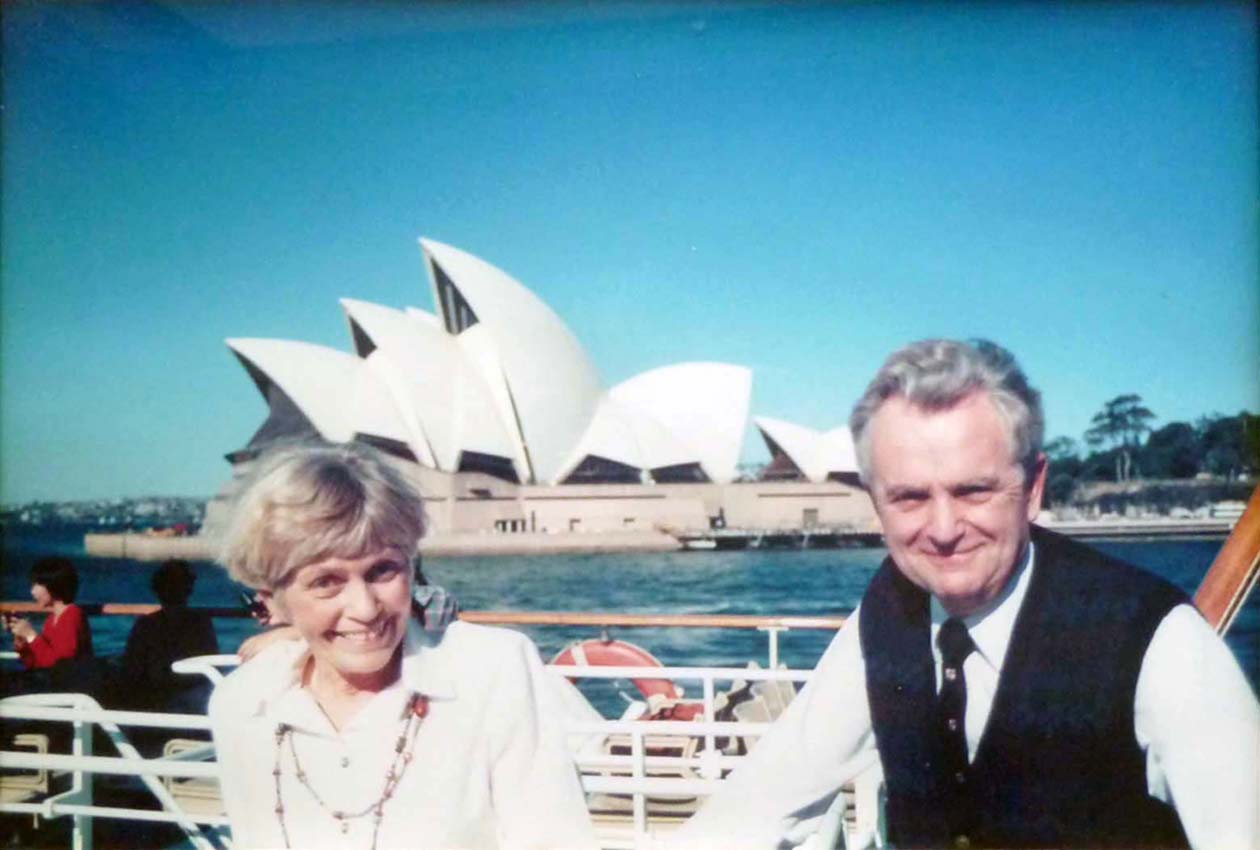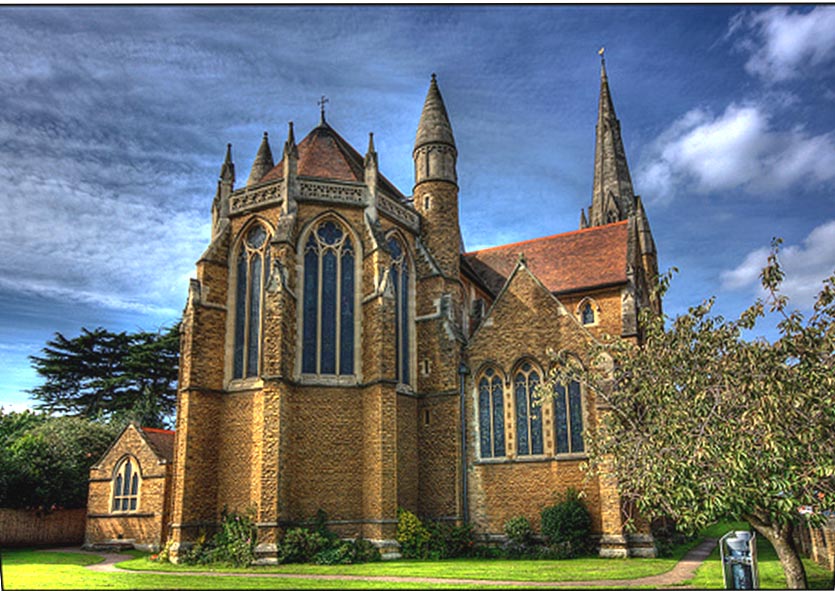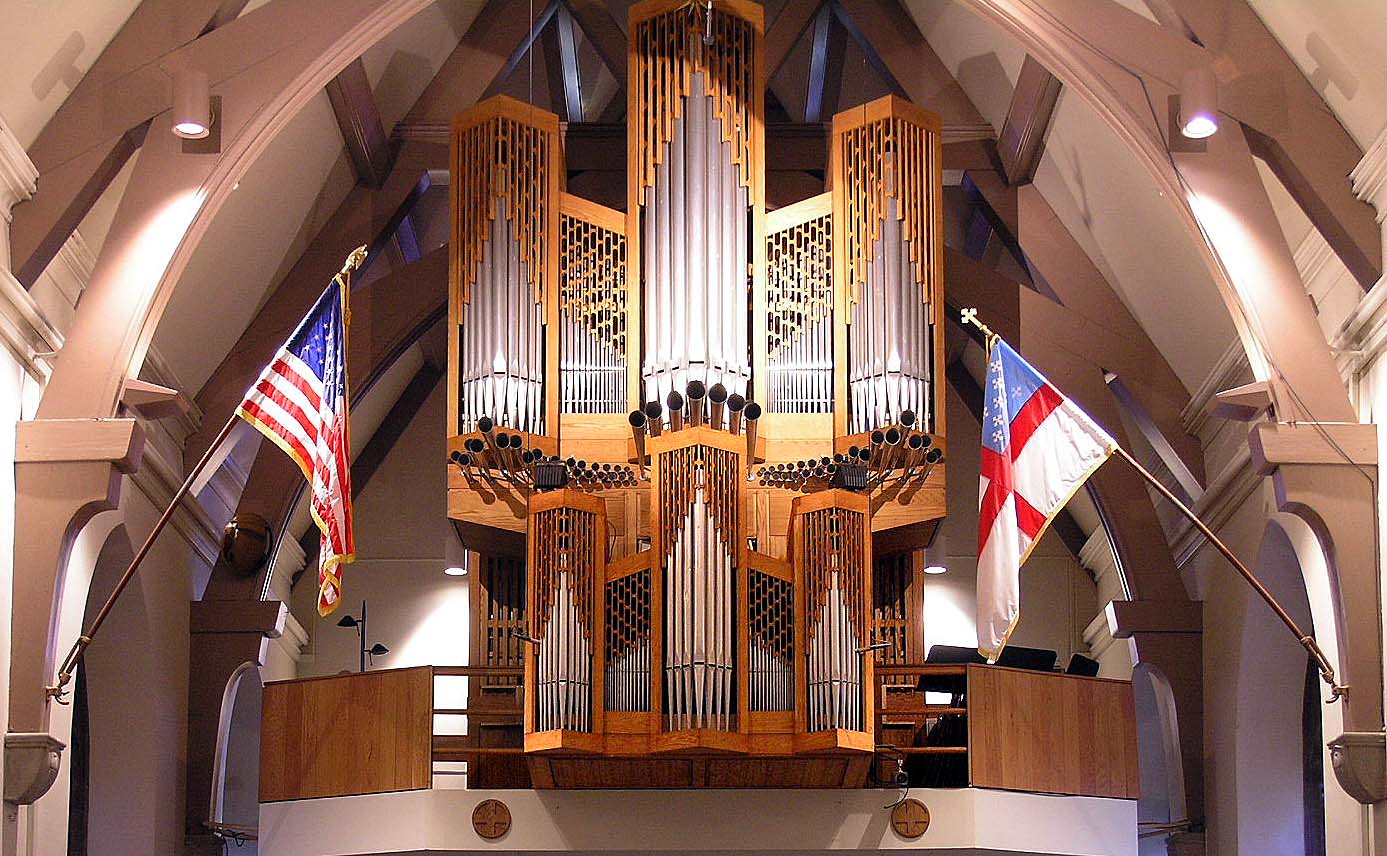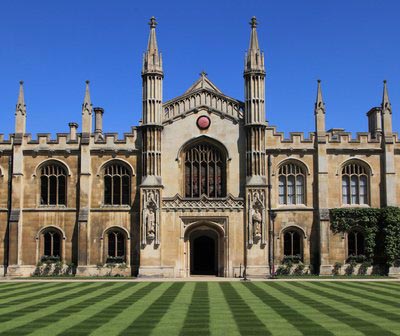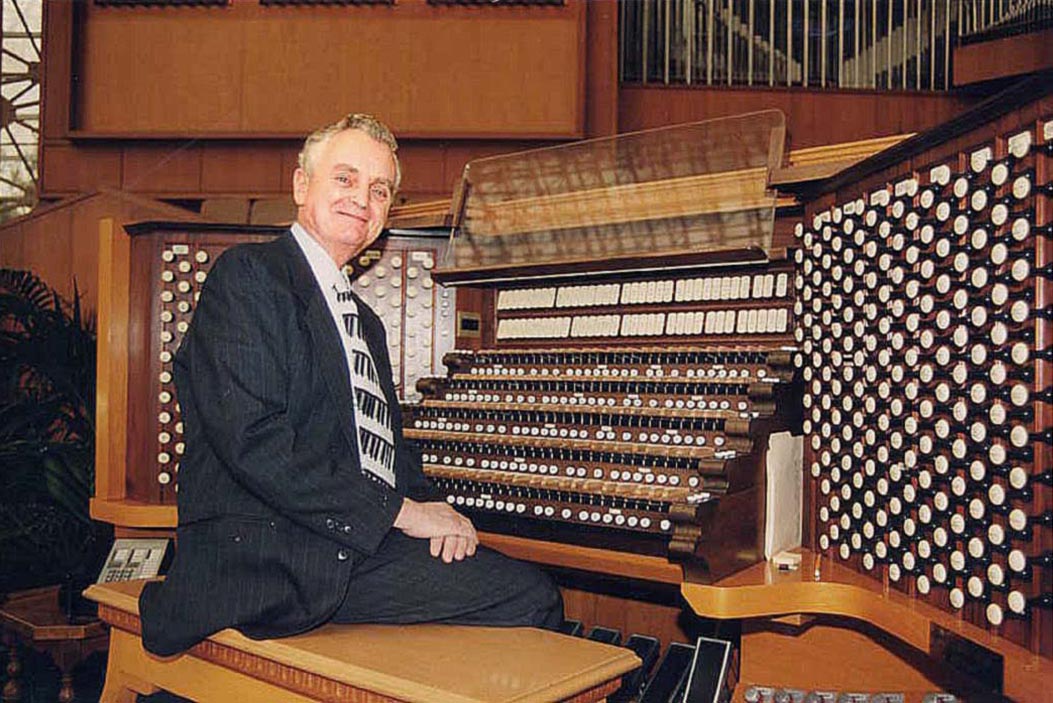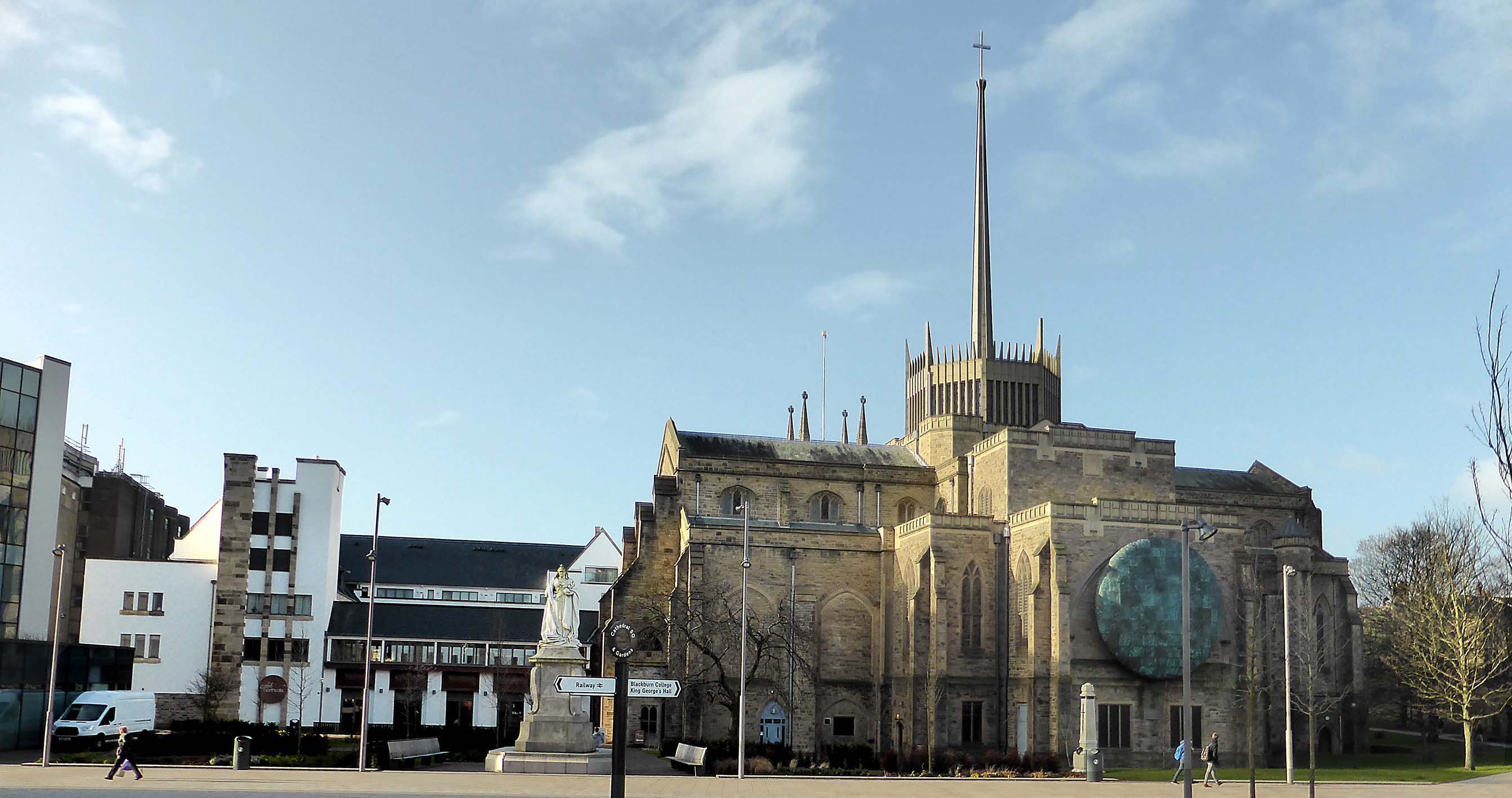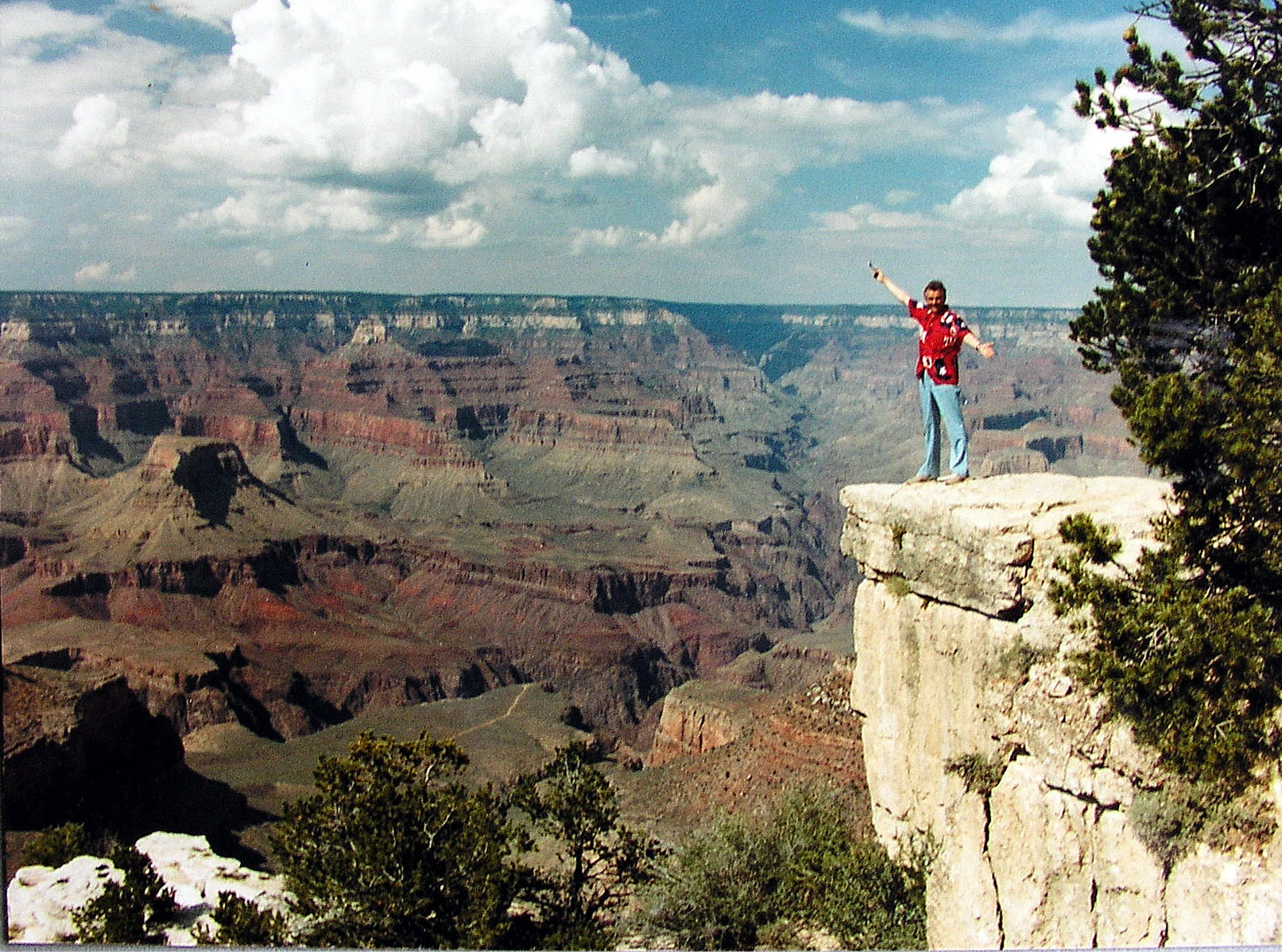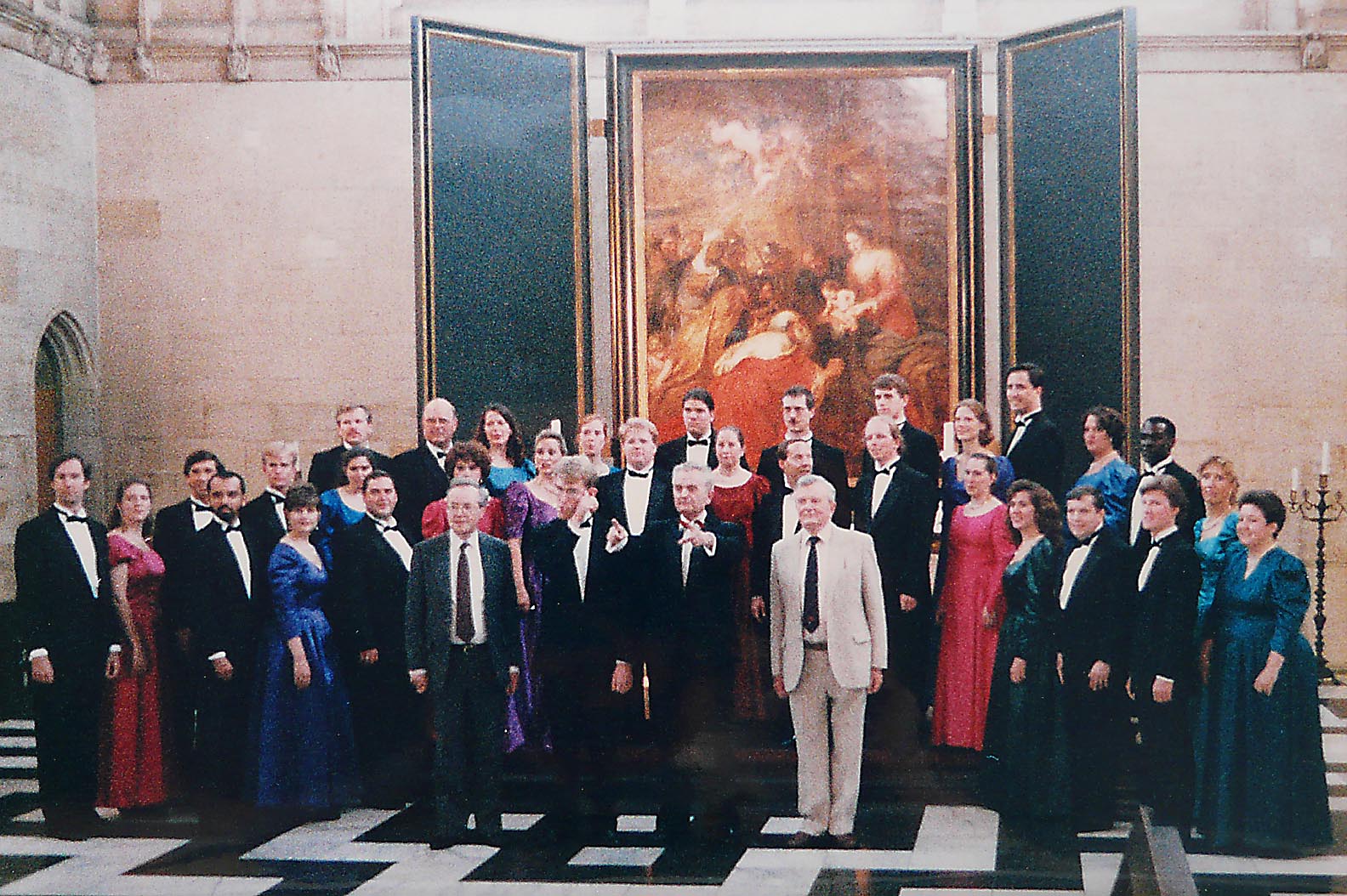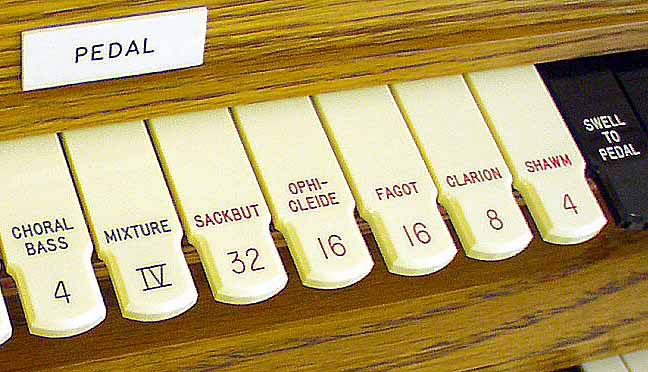WAS BACH A MATH3MAT1C1AN?
© by John Bertalot from lectures he gave in
King’s College, Cambridge, August 1986
Southwell Minster, July 2000
The Hereford Three Choirs’ Festival, August 2003
and Blackburn, September 2010
5 The six Schübler Chorale Preludes
I am indebted for much of the material in this section to two articles that Professor Randoph Currie wrote in the Quarterly Journal of the Riemenschneider Bach Institute in 1973, Vol. IV/1 pp 26-38, and Vol. IV/2 pp 25-39.
The Six Chorales, BWV 645-50, popularly known as the Schübler Chorale Preludes, after the name of their engraver and publisher.
Currie asked the question, why did Bach choose these six particular pieces, taken mostly from his cantatas, when there were many other which he could have arranged for organ, (such as Jesu, joy of man’s desiring!)
David Humphreys wrote in the Oxford Composer Companions, J. S. Bach p.442 OUP. that, because Bach ‘went to the trouble and expense of securing the services of a master engraver to produce [this collection...it] indicates that he did not regard the Schübler Chorales as a minor piece of hack-work, but as a public statement...’ Why was this collection so important to Bach?
Currie looked at the subject matter of the chorales and came to the conclusion that they defined the six pivotal steps of the Christian life.
That in itself could justify Bach’s choice of these chorales.
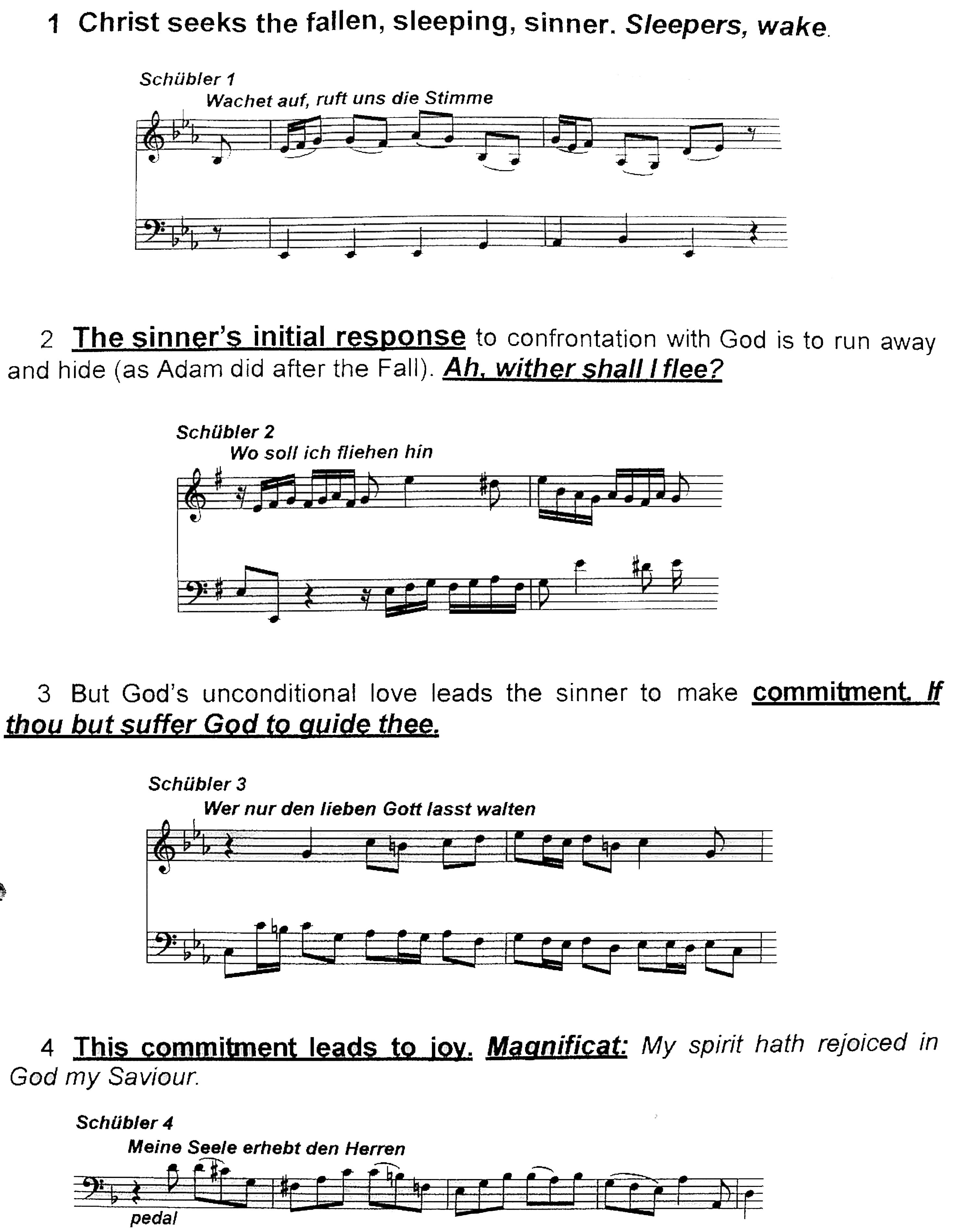
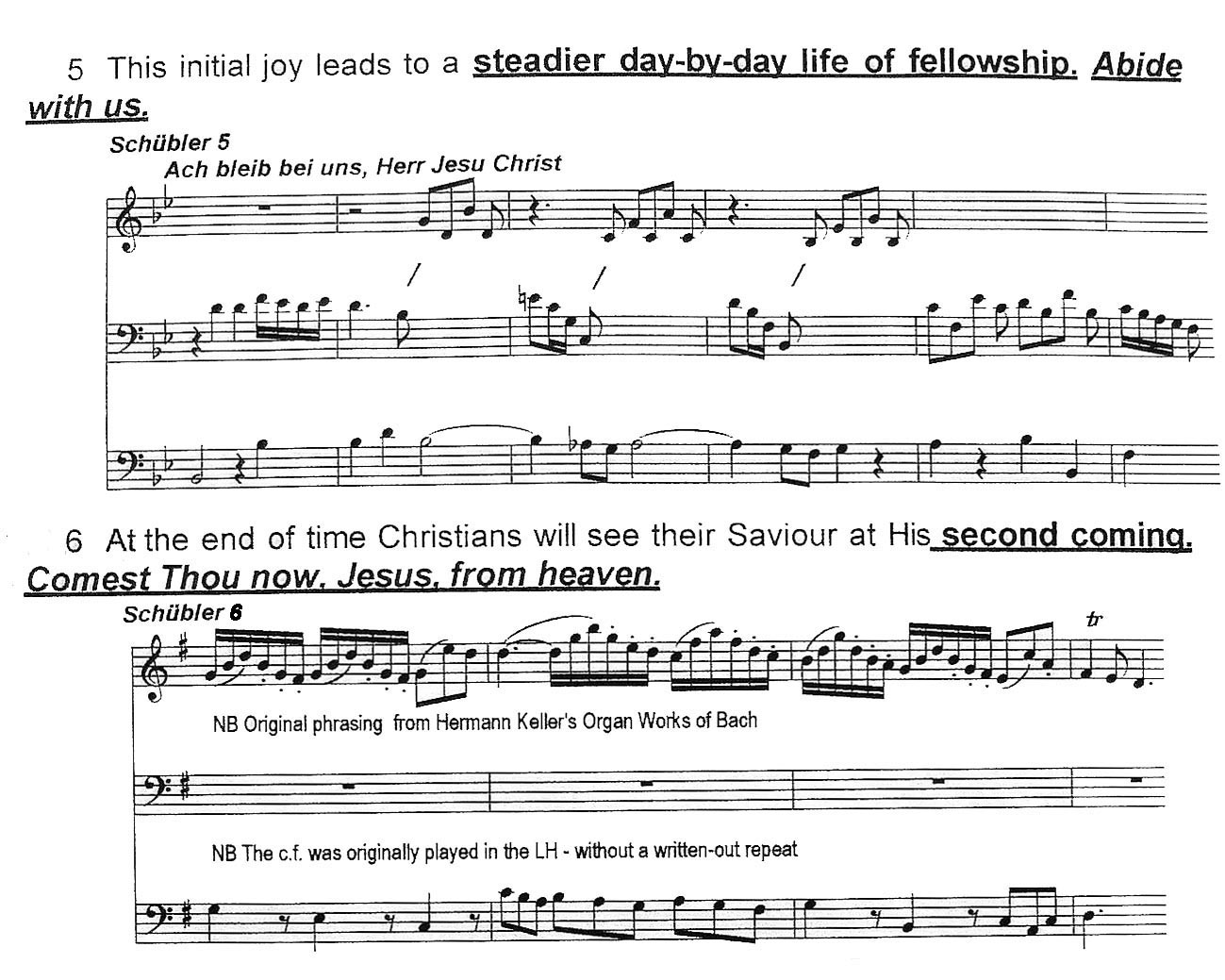
N.B. Bach changed the words of this last chorale from Lobe den Herrn, (Praise to the Lord), to Kommst du nun - as he was to change, at the end of his life, Wenn wir in Hochstein Noten sein to Vor deinen Thron. (See my final article.)
But Currie delves much further beneath the surface and discovers an interesting structure, which can be appreciated the more easily by arranging the Chorales in a circle:
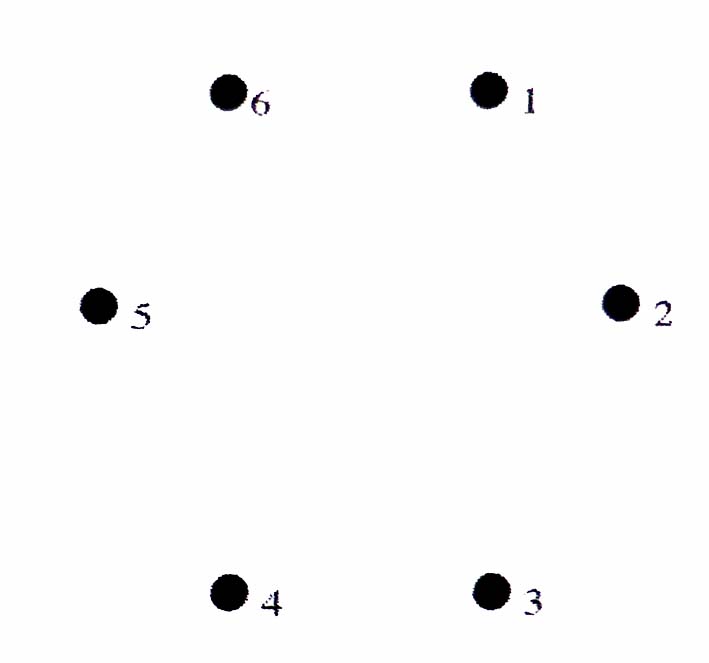
He noted that the Chorales had closely related key schemes: three major and three minor keys, with the major keys separated by the interval of a major third, and the minor keys by a tone.
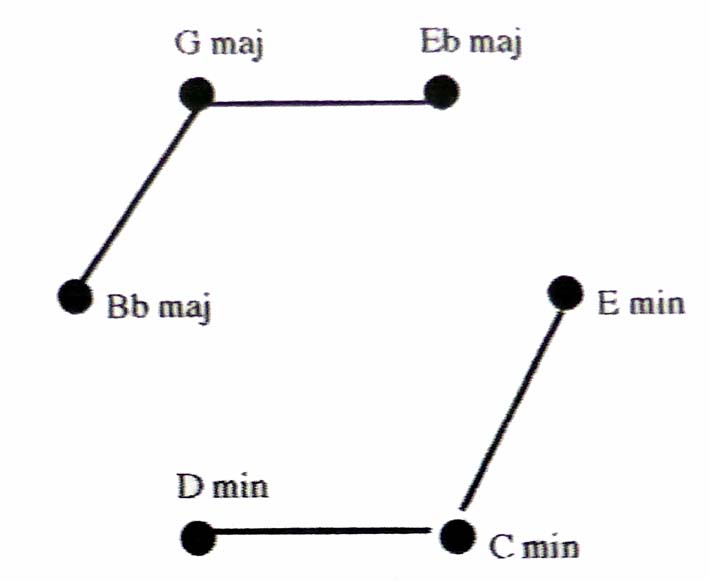
He also noted that the keys of pairs of Chorales were separated by one, two, and three semitones
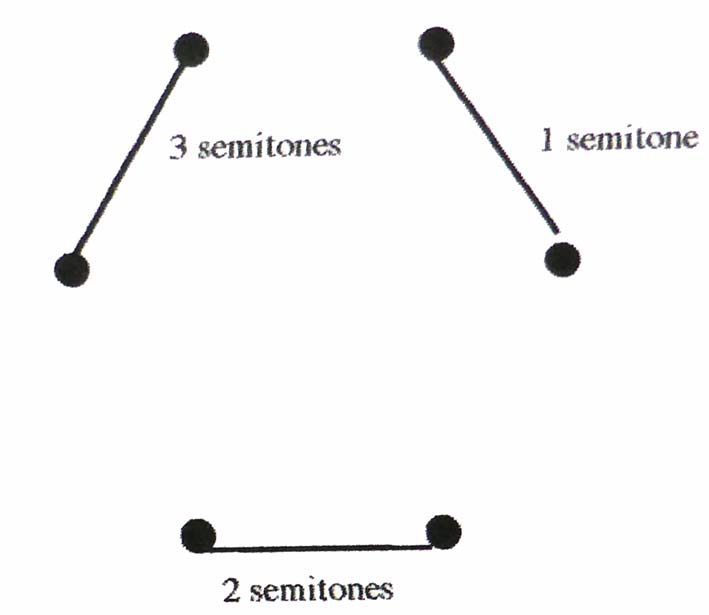
The Chorales were written in pairs of 3 and 4 voices:
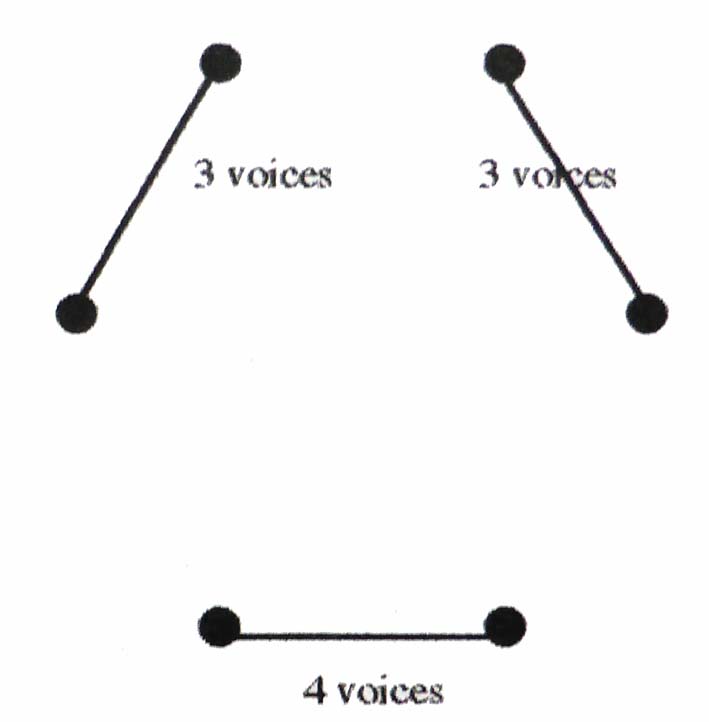
The cf appears twice in the left hand,
twice in the right hand and
twice in the pedals.
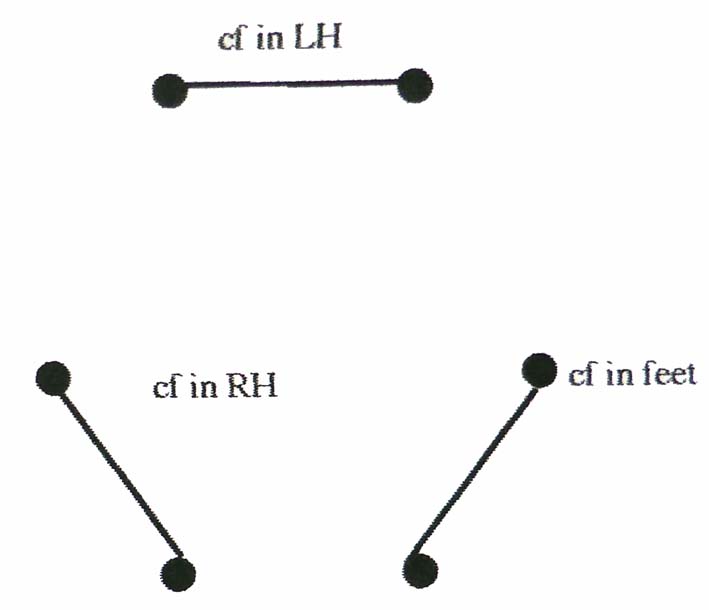
(NB In the original version the cf of the sixth prelude was in the left hand.)
Further, he pointed out how appropriate it was to have the cf in the feet for the second and third preludes,
for the second is about running away from God, and the third (conversion) is about returning, as did the prodigal son, to God
In the fourth prelude it was opportune to have the cf in the right hand, which is, traditionally, the stronger hand. (‘He hath showed strength...’)!
But then he goes on to reveal the use of the Bach numbers - 14 and 41.
The full title of the work is written on 14 lines (13 lines of words and one decorative straight line).
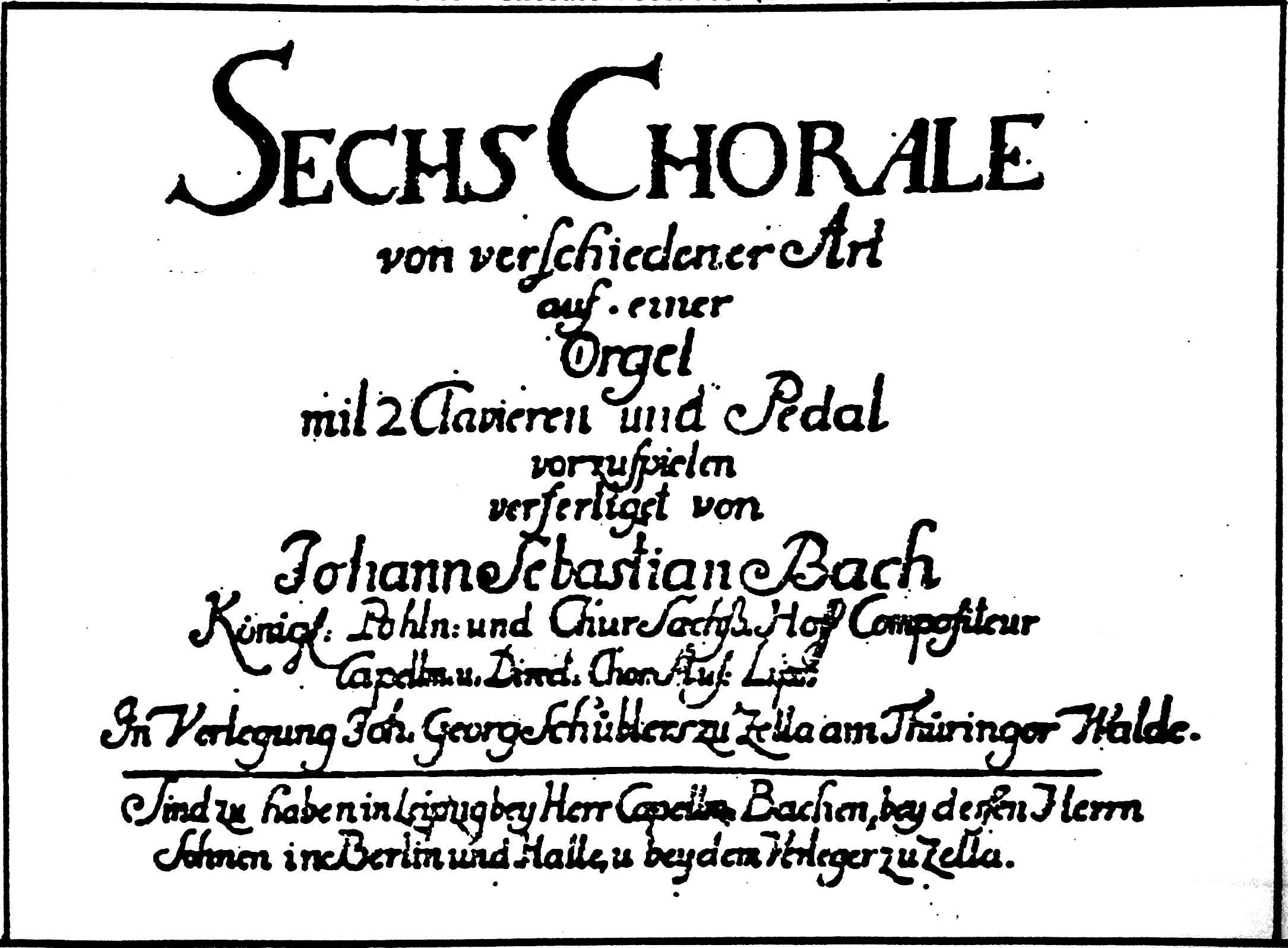
The work is printed on 14 pages with three sets of staves per page.
The reader may regret that that would bring the total number of staves to 42 - but no -
there are only two sets of staves of music on the last page, the remaining set having been erased = 41 staves!
He also pointed out that the number of bars in each prelude were 54, 33, 34, 35, 46 and 54.
(NB in the original version of the last Chorale, the repeated section is indicated by double bar line, repeat.)
He noted the symmetrical structure of these numbers, beginning and ending with 54,
and with three consecutive numbers for the second through fourth prelude.
But Professor Currie’s most astonishing discovery comes at the very centre of this set of Chorales.
The number of bars in the Six Chorales is 256 = 27+27 (sic).
At exactly the halfway mark, (bars 128-129), Currie noticed four significant notes B A C H
which surely indicate that Bach was identifying himself with the Christian message of these Chorales.
B flat in German in 'B', and B natural is 'H'
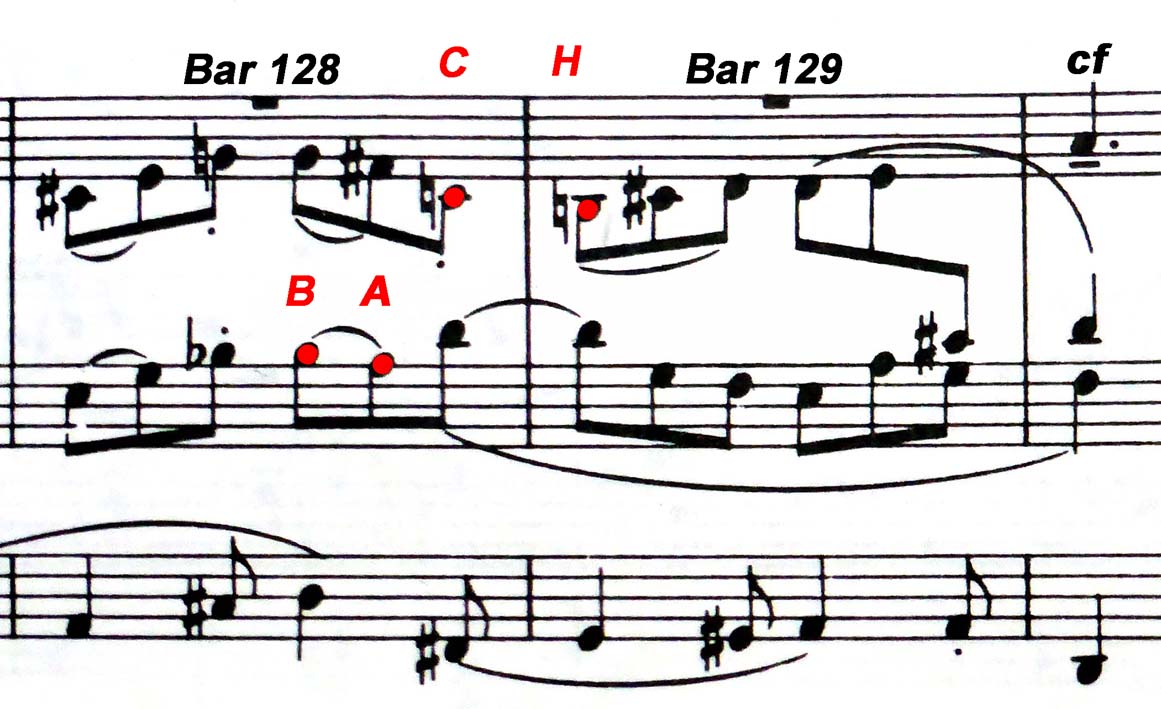
If this was not accidental, could it be that Bach would write his name, musically, in some other significant place?
Yes, he did - in the final contrapunctus - the 14th (sic) - of the Art of Fugue.
But this final fugue of the 'Art of Fugue' was unfinished...
Listen to the last few measures of this unfinished fugue:
{phocadownload view=fileplay|id=122|playerwidth=328|playerheight=200|playerheightmp3=30}
NB If you can't hear it on this site,
you can hear it on JB's audio files -
top left of main Blog under BACH ART END.
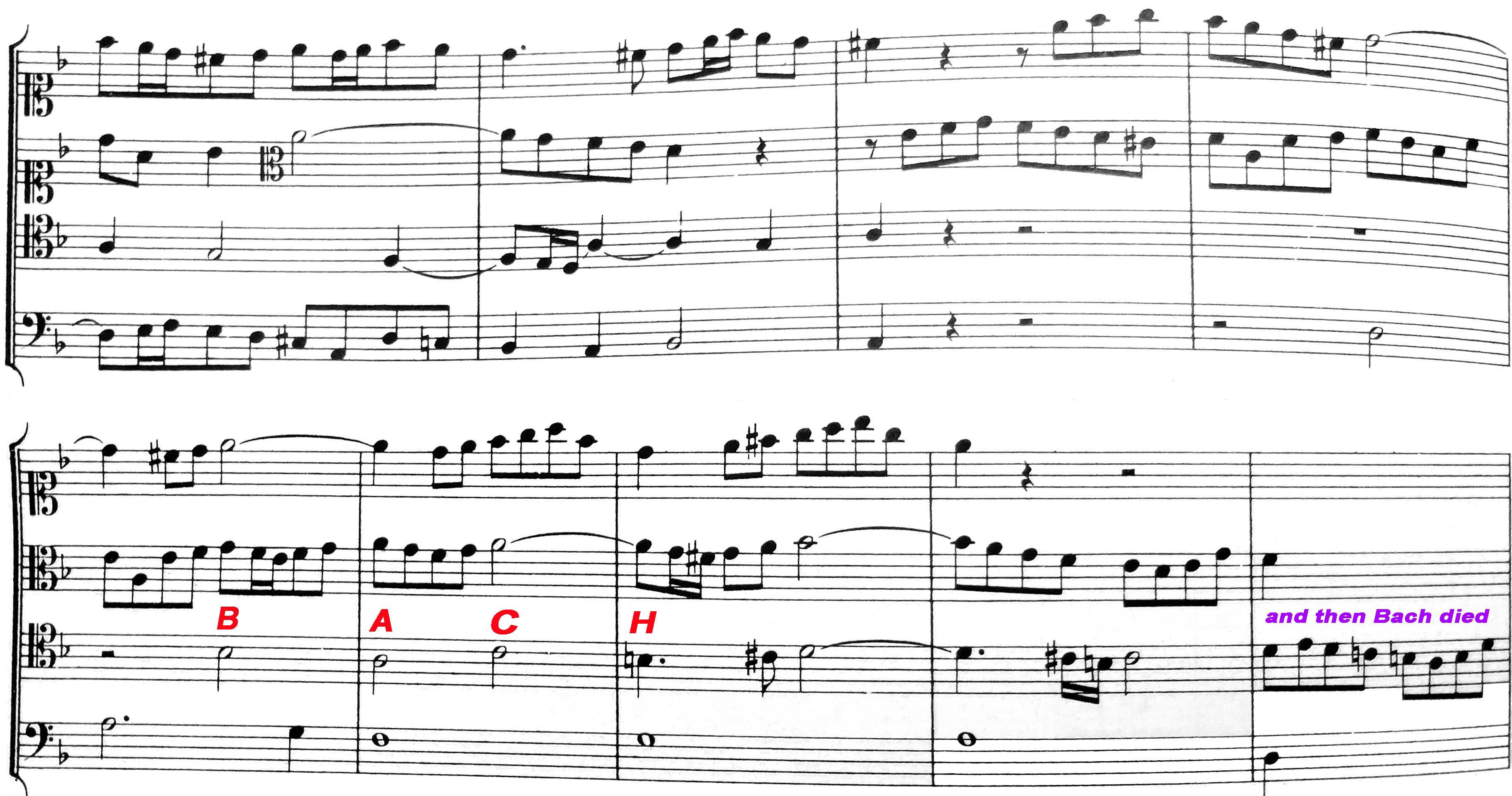
...C.P.E. Bach wrote in the autograph of this fugue: 'N. B. While working on this fugue, where the name B.A.C.H. appears in the countersubject, the composer died."
Marpurg, a pupil of JSB, in his preface to the 1752 edition of the Art of Fugue wrote,
‘...in this work are contained the most hidden beauties possible in the art of music...’
May your mind not have been blown by these amazing revelations of Professor Currie!

